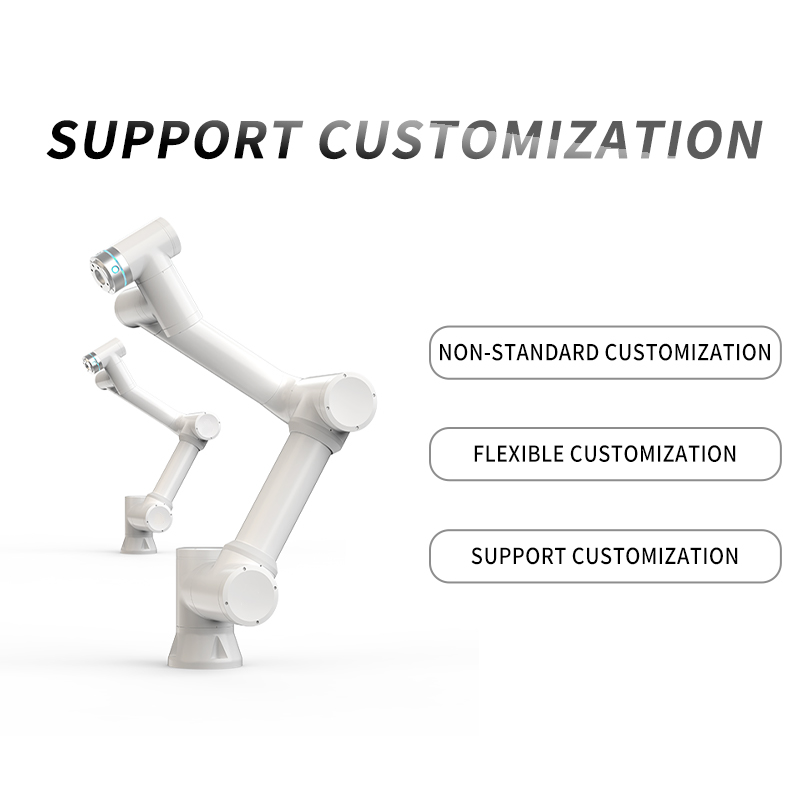Multifunctional collaborative robot arm
1. It is equipped with force sensors, speed monitors, etc. Some of them also have advanced collision detection functions, which can automatically stop running when encountering obstacles or human bodies.
2. It reduces sharp corners and other parts that may cause harm to people, and can work closely with people without guardrails, reducing safety risks.
3. It is small in size, light in weight, and can be adapted to most desktop and grasping tasks, easy to move and redeploy.
4. The joints have a large range of motion, can achieve multi-degree-of-freedom movement, and can make various complex movements like human arms.
5. It has an intuitive programming interface and easy-to-understand operation methods. Operators can complete settings and programming in a short time without a deep programming foundation.
The multifunctional collaborative robot arm is an innovative achievement in the field of industrial automation, which aims to achieve close collaboration between humans and robots and improve production efficiency and flexibility. It combines advanced mechanical design, precise sensing technology, intelligent control system and friendly human-machine interaction interface.
It has a unique intelligent collaborative control algorithm that enables safe and efficient collaboration between robots and humans. The algorithm is based on the fusion processing of multi-sensor information such as force, position, speed, etc., and evaluates the relative position and motion state of the robot and human in real time.
Integrating a variety of high-precision sensor technologies, the visual sensor uses a high-resolution camera and advanced image processing chip to accurately identify and locate tiny objects, with positioning accuracy reaching sub-millimeter level.
Able to quickly switch and perform multiple different types of tasks on the same production line. With high-precision sensing systems and advanced control algorithms, extremely high operating accuracy can be achieved in various tasks.
Human-machine safety collaboration is considered as the primary factor at the beginning of the design, and it has multiple safety protection mechanisms. It has good scalability, rich communication interfaces and expansion slots, which makes it convenient for users to add various external devices and functional modules according to actual needs.


















